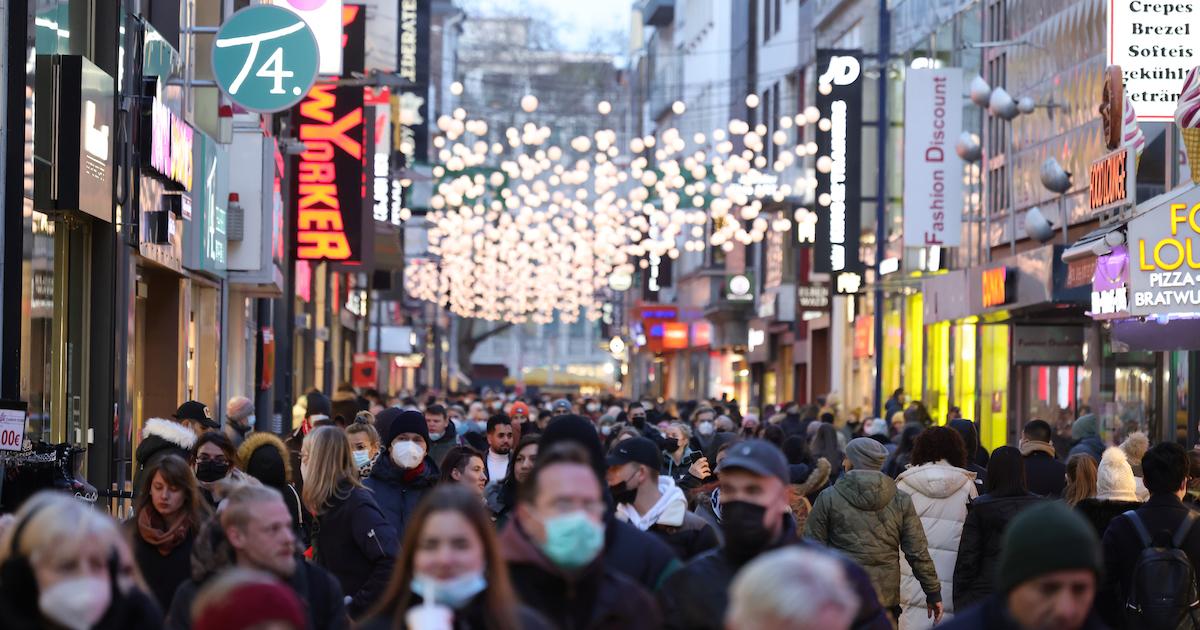The Population Has Officially Hit 8 Billion. Here's How This Could Impact Climate Change
Published Nov. 15 2022, 4:32 p.m. ET

A newborn baby girl lies on the bed whilst being dressed by Midwife Ivy Gatsi shortly after being born on Jan. 15, 2021 in Harare, Zimbabwe.
Remember that scene in The Princess Diaries where a rain-soaked Mia makes a dramatic speech accepting the queendom of Genovia, and states that there are 7 billion people in the world? Well, two decades later, that’s not true anymore, as the global population has officially hit 8 billion people. But exactly when did the population reach 8 billion?
Considering the potential environmental ramifications of overpopulation, this is important news. Here’s what we know so far about the recent human population growth, how this could impact the planet and climate change, and what must be done to prevent the human population from getting out of hand.

People crowd a pedestrian shopping street in the city center during the fourth wave of the coronavirus pandemic on Dec. 22, 2021 in Cologne, Germany.
When did the population reach 8 billion?
In October, the UN projected that Tuesday, Nov. 15, 2022 would mark the day the world hit a population of 8 billion people — and that’s exactly what happened, with today being known as “Day of 8 Billion.”
Why are there now 8 billion people on Earth?
The UN primarily attributes population growth to improvements in medicine, public health, nutrition, hygiene, and “persistent” fertility levels in certain regions. All of these advancements have led to both more babies being born and to people living longer.
The most significant population increase over the past decade happened in middle-income countries, mostly in Asia. China has long been the country with the highest population (it’s currently about 1.412 billion), but CNN reports that notable growth in India (180 million people since 2011) is setting the stage for India to strip China of that title in 2023.
Additionally, many of the countries with high fertility rates are some of the lowest-income countries in sub-Saharan Africa. According to the UN, as populations continue to increase in these areas, this could get in the way of the planet from achieving the UN’s Sustainable Development Goals (SDGs).
The UN asserts that accomplishing the SDGs is a major component of limiting global heating, along with maintaining the goals set by the Paris Agreement — so making sure human population growth does not pick back up is vital.
Overall, human population growth is actually slowing down.
The world reached a population of 6 billion people in 1999; and 12 years later, in 2011 it reached a population of 7 billion.
Now, about 11 years later (though the UN cites it as 12 years), we have jumped another billion in population to a total of 8 billion people on Earth.
That said, the UN believes human population growth is slowing overall — the organization currently predicts that we won’t reach a population of 9 billion until 2037, which is 15 years from now.
Despite what Elon Musk or Nick Cannon might think, it’s good news that human population growth is actually slowing. But why is that?
Preventing the human population from getting out of hand is important in the fight against climate change.
“As we welcome the 8 billionth member of our human family, we must think ahead,” UN Secretary-General António Guterres stated on Twitter.
“By 2050, the world’s population will be approaching 10 billion,” he continued. “Action — or inaction — by the G20 will determine whether everyone can live sustainably and peacefully on a healthy planet.”
Essentially, to maintain the SDGs — and subsequently slow down global heating — it is imperative that efforts be made to prevent human population growth rates from increasing. That’s because the more humans there are on Earth, the more resources are needed to sustain them.
According to the Center for Biological Diversity, a few solutions for this include: protecting reproductive health, abortion rights, and other matters related to gender equity; reducing poverty rates; improving living conditions; and protecting public health and nature.
There are also a growing number of environmentalists and human rights activists who have pledged not to have biological children so as not to contribute to the world’s growing population.